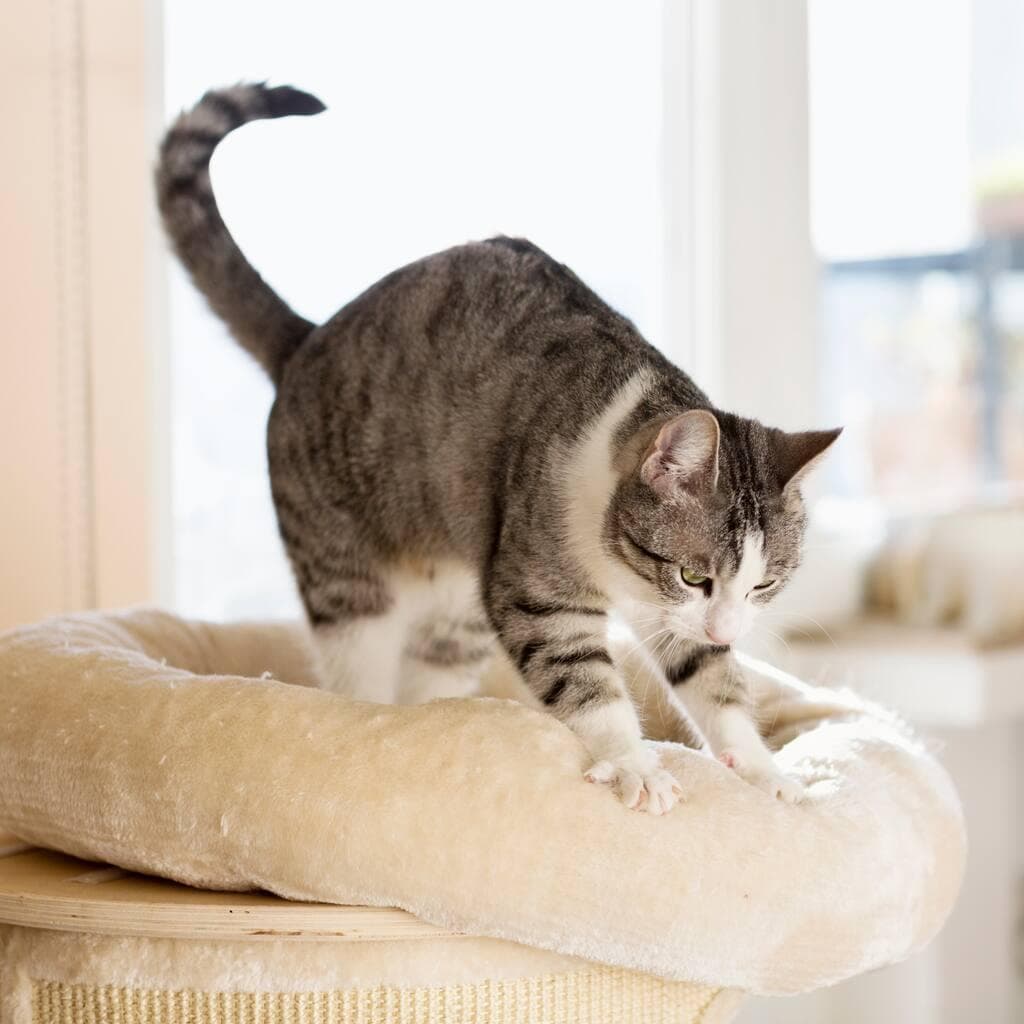Introduction
The kneading behavior in cats is one of the most fascinating and curious aspects that capture the attention of pet owners. Cats often knead with their front paws on soft surfaces like blankets, pillows, or even on their owners, accompanying this movement with purring and a serene expression. This gesture, which may seem strange or enigmatic, has deep roots in the nature and development of felines.

Why Do Cats Knead?
Kneading is a common behavior in cats that can be traced back to their early days of life. From a young age, kittens knead their mother's belly while nursing, which helps stimulate milk production. This instinctive behavior often continues into adulthood, and many cats continue to knead in situations that bring them comfort and security, such as when they are in their bed or on a soft blanket.
In addition to seeking comfort, kneading may also be related to strengthening the bond between cats and their owners. This gesture also releases endorphins, which generate a sense of well-being and tranquility for the cat. Although the origin of kneading has an instinctive root, it is common for cats to associate it with pleasant experiences throughout their lives.

Kneading in Cats: Instinct or Habit?
Kneading in cats seems to be deeply rooted in their nature, but it can also be influenced by their life experiences. Instinctively, cats knead from a young age, indicating that it is an inherent behavior that is part of their development. However, as they grow, this behavior can become a habit, especially if it is associated with situations that provide them with comfort and security.
Many cats knead when they are in a relaxed environment or when they feel safe and calm. This behavior may be a conditioned response to the sense of well-being they experience when kneading during their early days of life. While instinct plays a crucial role in the origin of kneading, the habit of kneading can be reinforced by the environment and positive experiences the cat associates with this gesture.

Kneading: A Way for Cats to Mark Territory?
Kneading is not only a behavior that cats use to seek comfort, but it may also be related to territorial marking. When a cat kneads, the sweat glands located in the pads of their paws release pheromones that impregnate the surface where they knead. These pheromones are a subtle way of marking territory, indicating that the space or object belongs to them and makes them feel familiar and safe.
This behavior is similar to other forms of territorial marking in cats, such as rubbing against objects or scratching surfaces. However, kneading is a quieter and more passive method that often goes unnoticed by owners. Although not all cats knead to mark territory, it is one of the possible reasons behind this behavior, which combines both instinct and interaction with their environment.

Is It Harmful for Cats to Knead?
In most cases, kneading in cats is a harmless and natural behavior that should not cause concern for owners. For cats, kneading is a relaxing activity that helps them relieve stress and feel more comfortable in their environment. However, in some situations, this behavior can cause discomfort, especially if the cat uses its claws while kneading, which can be painful for the recipient.
If your cat's kneading includes the use of its claws and becomes uncomfortable or painful, there are ways to manage it without discouraging the behavior entirely. You can gently trim your cat's claws to minimize damage or provide them with a more suitable surface to knead, such as a blanket or cushion. It is important to remember that kneading is a natural and positive behavior for cats, so finding a solution that works for both the cat and its owner is ideal.

Differences Between Cats That Knead and Those That Don't
Not all cats have the habit of kneading, and this can be due to various reasons:
- Early experiences: Some cats knead regularly, which could be related to a childhood where they found comfort in this behavior. Cats that don't knead may have developed other ways to seek comfort or simply not have associated kneading with positive sensations during their upbringing.
- Cat's personality: Differences in kneading behavior can also depend on the cat's personality. Some cats are more affectionate and tend to knead to show affection, while others may be more independent and have no interest in this behavior.
- Environment and experiences: Cats that grew up in an environment where they were frequently petted and cared for may be more likely to knead. In contrast, cats that did not have the opportunity to develop this behavior in their youth or have had less positive experiences may not show interest in kneading.

Conclusion
Kneading is a fascinating behavior in cats that reveals much about their instincts and personal experiences. Although not all cats do it, those who do use it as a way to seek comfort, mark territory, and show affection. Understanding the reasons behind this behavior can help strengthen your bond with your cat and ensure that both of you enjoy a harmonious coexistence.





